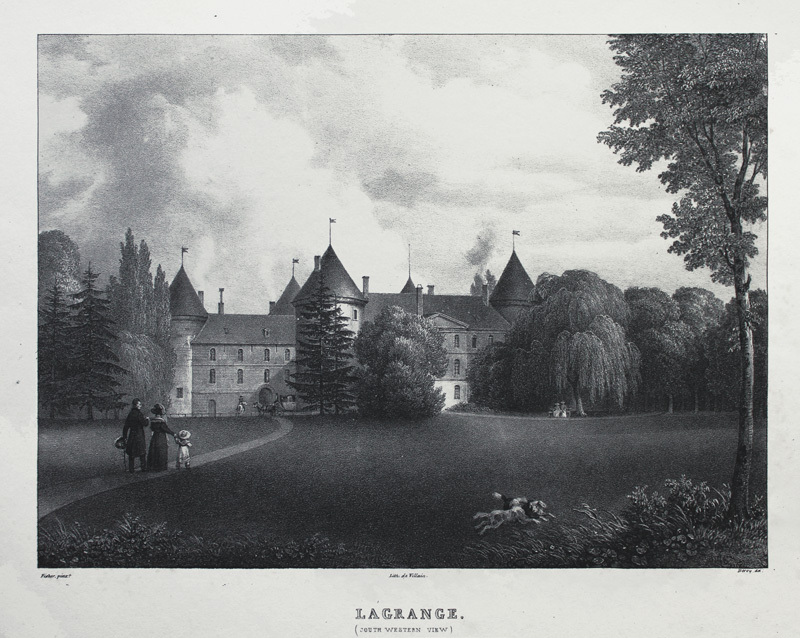
19th, 20th & 21st Century Fine Prints
707-546-7352 · fax 707-546-7924 · web: www.annexgalleries.com · email: artannex@aol.com
LaGrange (South Western View) from the suite: "Views of LaGrange - the Residence of General Lafayette", after Isidore-Laurent Deroy by Alvan Fisher

LaGrange (South Western View) from the suite: "Views of LaGrange - the Residence of General Lafayette", after Isidore-Laurent Deroy
Alvan Fisher
Title
LaGrange (South Western View) from the suite: "Views of LaGrange - the Residence of General Lafayette", after Isidore-Laurent Deroy
Artist
Alvan Fisher
1792 - 1863 (biography)Year
1826
Technique
lithograph
Image Size
7 11/16 x 10 7/16" image
Signature
stone signed: A Fisher, pinx. (and) Deroy, del.
Edition Size
not stated
Annotations
in stone: lith de Villain (and) title
Reference
Paper
white wove
State
published
Publisher
A. Fisher, Boston
Inventory ID
5205
Price
SOLD
Description
"Views of La Grange - the Residence of General Lafayette" is a rare suite, being one of the earliest lithographed works published in the United States. This image is one of four, after drawings by French artist Isidore-Laurent Deroy (1797 - 1886). In 1825, while in Paris, Alvan Fisher undertook a project similar to his views of Harvard College. He had evidently met General Lafayette in 1824 when Lafayette stopped at Dedham during his triumphal tour of the United States. Fisher was granted permission to complete paintings of Chateau La Grange, Lafayette's estate outside Paris. His four views of La Grange were then drawn on lithographic stones in France by the noted lithographer, Isadore Deroy, and brought back for printing on one of the first lithographic presses used in the United States. Portfolios of these prints were sold as souvenirs, building on the popularity of General Lafayette. Chateau de la Grange-Bléneau came to the Lafayette family through inheritance. Lafayette lived there from 1802 until his death in 1834. The chateau, located in the commune of Courpalay in the Seine-et-Marne d?partement of France, dates from the 14th century. Its five circular towers were added in the 15th century, and the structure was further altered in the 17th century. The castle has been untouched since Lafayette's death.
